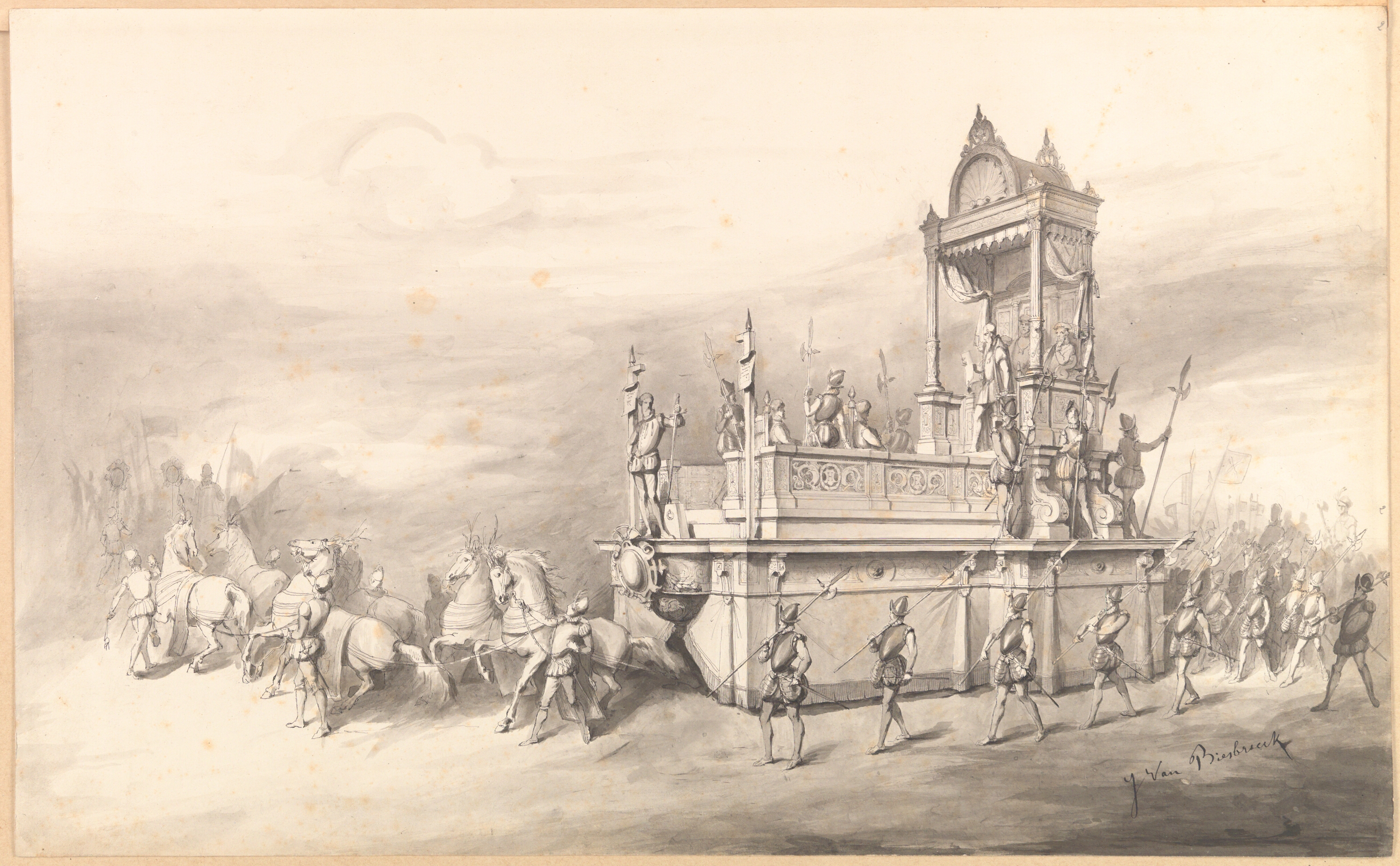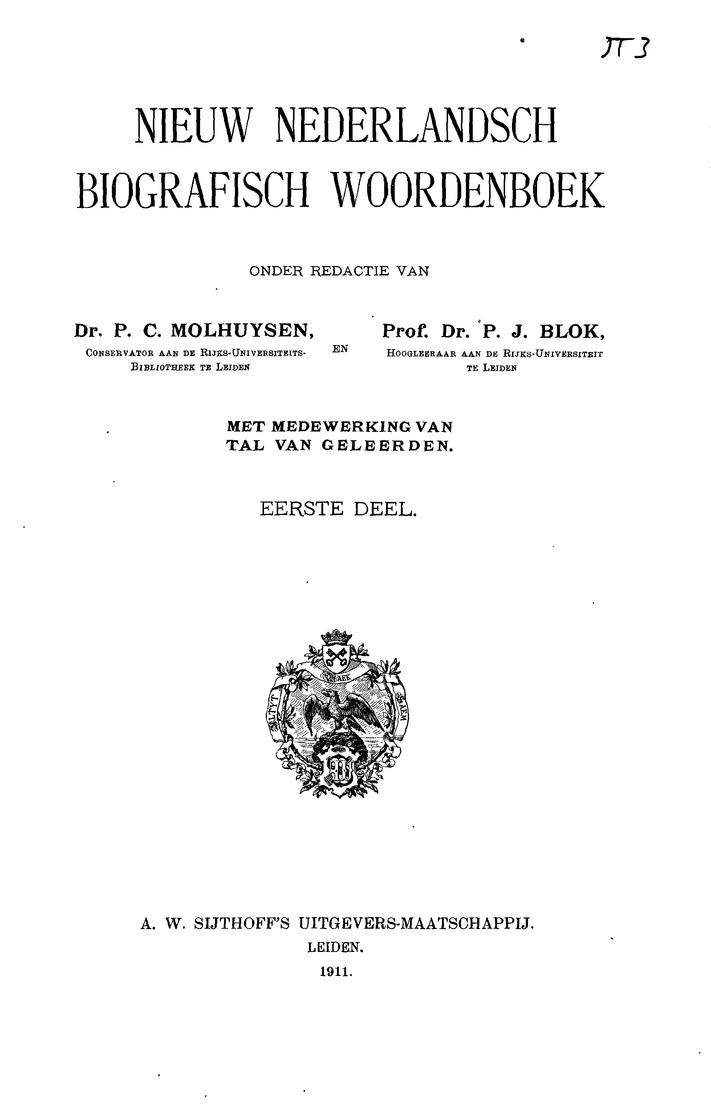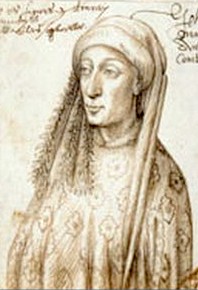|
Cunerus Petri
Cunerus Petri (ca. 1530–1580) was the first bishop of Leeuwarden to take possession of the see.J. De Jong, "Cunerus Petri", in ''Nieuw Nederlandsch Biografisch Woordenboek'', vol. 5 (Leiden, 1921), 122-124. He was nominated in succession to Remi Drieux, who had been unable to do so before being translated to the position of bishop of Bruges. Life Petri was born around 1530 in Duivendijke, near Brouwershaven in the County of Zeeland. He studied Philosophy and Theology at Leuven University, graduating with a doctorate in Theology on 12 November 1560. He was named bishop of Leeuwarden in 1569, and was installed 1570. On 26 February 1570 he published the decrees of the Council of Trent in his diocese, and on 15 April held a diocesan synod. In December 1576 the States of the Lordship of Friesland subscribed to the Pacification of Ghent. On 28 March 1578 Petri was imprisoned by the rebels in Harlingen. Upon his release he sought refuge in Germany, dying in Cologne on 15 February 15 ... [...More Info...] [...Related Items...] OR: [Wikipedia] [Google] [Baidu] |
Bishop Of Leeuwarden
The Roman Catholic Diocese of Leeuwarden was a short-lived (1559-1580) Roman Rite Dutch suffragan diocese in the ecclesiastical province of the Archbishopric of Utrecht. History The Diocese of Leeuwarden was established in principle on 12 May 1559, canonically split from the then Diocese of Utrecht, which was simultaneously promoted to an Archdiocese and became Leeuwarden's Metropolitan. Its territory was defined by the papal bull ''Regimini universalis'' of 7 August 1561 as the territory of Friesland with the islands Terschelling and Ameland. The episcopal see was to be the church of St Vitus, formerly a parish church. Diocesan finances were derived from the income of the regular canons of Burgum and the Premonstratensian Pingjum Abbey near Bolsward, with the cathedral chapter financed from Mariengaard Abbey in Hallum. The first bishop to be appointed, in 1561, was Remi Drieux (Remigius Driutius), who never took possession of his see. Despite this, in October 1565, Dreux ... [...More Info...] [...Related Items...] OR: [Wikipedia] [Google] [Baidu] |
Harlingen, Friesland
Harlingen (; fy, Harns ) is a municipality and a city in the northern Netherlands, in the province of Friesland on the coast of Wadden Sea. Harlingen is a town with a long history of fishing and shipping that received city rights in 1234. Overview Harlingen is served by two stations on the railway line from Leeuwarden. From 1904 to 1935 there was a passenger service on the North Friesland Railway, freight being carried until January 1938. Rederij Doeksen operate ferries to the Wadden islands of Vlieland and Terschelling that depart from Harlingen. The famous Dutch writer Simon Vestdijk was born in Harlingen and used to depict his hometown in his writings as Lahringen. The town of Harlingen, Texas, in the United States is named after this city because many of the original settlers of the Texas town came from Harlingen. The Admiralty of Friesland was established in Dokkum in 1597 but moved to Harlingen in 1645. Population centers * Harlingen ( West Frisian: ''Harns'') * ... [...More Info...] [...Related Items...] OR: [Wikipedia] [Google] [Baidu] |
People From Schouwen-Duiveland
A person ( : people) is a being that has certain capacities or attributes such as reason, morality, consciousness or self-consciousness, and being a part of a culturally established form of social relations such as kinship, ownership of property, or legal responsibility. The defining features of personhood and, consequently, what makes a person count as a person, differ widely among cultures and contexts. In addition to the question of personhood, of what makes a being count as a person to begin with, there are further questions about personal identity and self: both about what makes any particular person that particular person instead of another, and about what makes a person at one time the same person as they were or will be at another time despite any intervening changes. The plural form "people" is often used to refer to an entire nation or ethnic group (as in "a people"), and this was the original meaning of the word; it subsequently acquired its use as a plural form of per ... [...More Info...] [...Related Items...] OR: [Wikipedia] [Google] [Baidu] |
16th-century Roman Catholic Bishops In The Holy Roman Empire
The 16th century begins with the Julian year 1501 ( MDI) and ends with either the Julian or the Gregorian year 1600 ( MDC) (depending on the reckoning used; the Gregorian calendar introduced a lapse of 10 days in October 1582). The 16th century is regarded by historians as the century which saw the rise of Western civilization and the Islamic gunpowder empires. The Renaissance in Italy and Europe saw the emergence of important artists, authors and scientists, and led to the foundation of important subjects which include accounting and political science. Copernicus proposed the heliocentric universe, which was met with strong resistance, and Tycho Brahe refuted the theory of celestial spheres through observational measurement of the 1572 appearance of a Milky Way supernova. These events directly challenged the long-held notion of an immutable universe supported by Ptolemy and Aristotle, and led to major revolutions in astronomy and science. Galileo Galilei became a champion ... [...More Info...] [...Related Items...] OR: [Wikipedia] [Google] [Baidu] |
1580 Deaths
Year 158 ( CLVIII) was a common year starting on Saturday (link will display the full calendar) of the Julian calendar. At the time, it was known as the Year of the Consulship of Tertullus and Sacerdos (or, less frequently, year 911 ''Ab urbe condita''). The denomination 158 for this year has been used since the early medieval period, when the Anno Domini calendar era became the prevalent method in Europe for naming years. Events By place Roman Empire * The earliest dated use of Sol Invictus, in a dedication from Rome. * A revolt against Roman rule in Dacia is crushed. China * Change of era name from ''Yongshou'' to ''Yangxi'' of the Chinese Han Dynasty. Births * Gaius Caesonius Macer Rufinianus, Roman politician (d. 237) Deaths * Wang Yi, Chinese librarian and poet (d. AD 89 AD 89 (LXXXIX) was a common year starting on Thursday (link will display the full calendar) of the Julian calendar. At the time, it was known as the Year of the Consulship of Fulvus a ... [...More Info...] [...Related Items...] OR: [Wikipedia] [Google] [Baidu] |
1530s Births
Year 153 ( CLIII) was a common year starting on Sunday (link will display the full calendar) of the Julian calendar. At the time, it was known as the Year of the Consulship of Rusticus and Rufinus (or, less frequently, year 906 ''Ab urbe condita''). The denomination 153 for this year has been used since the early medieval period, when the Anno Domini calendar era became the prevalent method in Europe for naming years. Events By place Roman Empire * Minor uprisings occur in Roman Egypt against Roman rule. Asia * Change of era name from ''Yuanjia'' (3rd year) to ''Yongxing'' of the Chinese Han Dynasty. Births * Didia Clara, daughter of Didius Julianus * Kong Rong, Chinese official and warlord (d. 208) * Zhang Hong, Chinese official and politician (d. 212) Deaths *Tiberius Julius Rhoemetalces Rhoemetalces, also known as Rhoimetalces ( el, Τιβέριος Ἰούλιος Ροιμητάλκης, fl. 2nd century AD; died 153), was a Roman client king of ... [...More Info...] [...Related Items...] OR: [Wikipedia] [Google] [Baidu] |
Rutger Velpius
Rutger Velpius (around 1540–1614/15) was a 16th- and 17th-century printer and bookseller. He was the first printer in the city of Mons, and later became printer to the court in Brussels. His career coincided closely with the first decades of the Dutch Revolt Life Leuven Velpius became a bookseller in Leuven in 1564, and in 1565 was licensed as a "sworn bookseller" to the University of Leuven. Around 1567 he married Catherine Waen, daughter of the Scottish expatriate bookseller John Waen. In 1570 Velpius was examined and certified as a printer, his certification specifying that he knew Latin, French and Flemish, and a little bit of Greek. For his work in Leuven he used two printer's marks: a large one with a crenellated tower, an angel of vengeance above it and the figures of Justice and Peace embracing before the gates, with the motto ''Justitia et pax osculate sunt. Psal. 84.'' (Justice and peace have kissed); and a smaller one showing Justice and Peace kissing with the motto ... [...More Info...] [...Related Items...] OR: [Wikipedia] [Google] [Baidu] |
Cologne
Cologne ( ; german: Köln ; ksh, Kölle ) is the largest city of the German western States of Germany, state of North Rhine-Westphalia (NRW) and the List of cities in Germany by population, fourth-most populous city of Germany with 1.1 million inhabitants in the city proper and 3.6 million people in the Cologne Bonn Region, urban region. Centered on the left bank of the Rhine, left (west) bank of the Rhine, Cologne is about southeast of NRW's state capital Düsseldorf and northwest of Bonn, the former capital of West Germany. The city's medieval Catholic Cologne Cathedral (), the third-tallest church and tallest cathedral in the world, constructed to house the Shrine of the Three Kings, is a globally recognized landmark and one of the most visited sights and pilgrimage destinations in Europe. The cityscape is further shaped by the Twelve Romanesque churches of Cologne, and Cologne is famous for Eau de Cologne, that has been produced in the city since 1709, and "col ... [...More Info...] [...Related Items...] OR: [Wikipedia] [Google] [Baidu] |
Pacification Of Ghent
The Pacification of Ghent, signed on 8 November 1576, was an alliance between the provinces of the Habsburg Netherlands. The main objectives were to remove Habsburg Spain, Spanish mercenaries who had made themselves hated by all sides due to their plundering, and to promote a formal peace with the rebellious provinces of Holland and Zeeland. Background In 1566, the Habsburg Netherlands experienced considerable political upheaval and civil unrest, which culminated in the Beeldenstorm, iconoclastic fury of that year. Its ruler, Philip II of Spain, responded by appointing Fernando Álvarez de Toledo, 3rd Duke of Alba as List of governors of the Habsburg Netherlands, Governor-general, and in 1567 he arrived there to restore order, accompanied by an army of mercenaries. Philip soon replaced the most important advisors to former regent Margaret of Parma, either by summarily executing those such as the counts of Lamoral, Count of Egmont, Egmont and Philip de Montmorency, Count of Hoorn, ... [...More Info...] [...Related Items...] OR: [Wikipedia] [Google] [Baidu] |
Nieuw Nederlandsch Biografisch Woordenboek
The ''Nieuw Nederlandsch Biografisch Woordenboek'' (''NNBW'') is a biographical reference work in the Dutch language. It has been succeeded by the ''Biografisch Woordenboek van Nederland''. It was published in ten parts between 1911 and 1937 by Sijthoff, Leiden, and the editors were and P. J. Blok. The lexicon contains more than 22,000 short biographies on important or at least notable Dutch people. No persons born after 1910 were included. The ''NNBW'' was compiled by several hundred historians and other experts. Since then it has been considered one of the most important reference works for Dutch history. It has been digitalised through a collaboration between the Digital Library for Dutch Literature (dbnl) and the Institution for Dutch History (ING), and both organisations have made the ''NNBW'' fully available to everyone on their respective sites. External links * Nieuw Nederlandsch Biografisch Woordenboek' at the Huygens Institute * Nieuw Nederlandsch biografisch woorde ... [...More Info...] [...Related Items...] OR: [Wikipedia] [Google] [Baidu] |
Council Of Trent
The Council of Trent ( la, Concilium Tridentinum), held between 1545 and 1563 in Trento, Trent (or Trento), now in northern Italian Peninsula, Italy, was the 19th ecumenical council of the Catholic Church. Prompted by the Protestant Reformation, it has been described as the embodiment of the Counter-Reformation."Trent, Council of" in Cross, F. L. (ed.) ''The Oxford Dictionary of the Christian Church'', Oxford University Press, 2005 (). The Council issued condemnations of what it defined to be Heresy, heresies committed by proponents of Protestantism, and also issued key statements and clarifications of the Church's doctrine and teachings, including scripture, the biblical canon, sacred tradition, original sin, Justification (theology), justification, salvation, the Sacraments of the Catholic Church, sacraments, the Mass (liturgy), Mass, and the Veneration, veneration of saints.Wetterau, Bruce. ''World History''. New York: Henry Holt and Company, 1994. The Council met for twenty- ... [...More Info...] [...Related Items...] OR: [Wikipedia] [Google] [Baidu] |
Old University Of Leuven
The Old University of Leuven (or of Louvain) is the name historians give to the university, or ''studium generale'', founded in Leuven, Brabant (then part of the Burgundian Netherlands, now part of Belgium), in 1425. The university was closed in 1797, a week after the cession to the French Republic of the Austrian Netherlands and the principality of Liège (jointly the future Belgium) by the Treaty of Campo Formio. The name was in medieval Latin Studium generale Lovaniense or Universitas Studii Lovaniensis, in humanistical Latin Academia Lovaniensis, and most usually, Universitas Lovaniensis, in Dutch Universiteyt Loven and also Hooge School van Loven. It is commonly referred to as the University of Leuven or University of Louvain, sometimes with the qualification "old" to distinguish it from the Catholic University of Leuven (established 1835 in Leuven). This might also refer to a short-lived but historically important State University of Leuven, 1817–1835. The immedi ... [...More Info...] [...Related Items...] OR: [Wikipedia] [Google] [Baidu] |


_1938.jpg)





